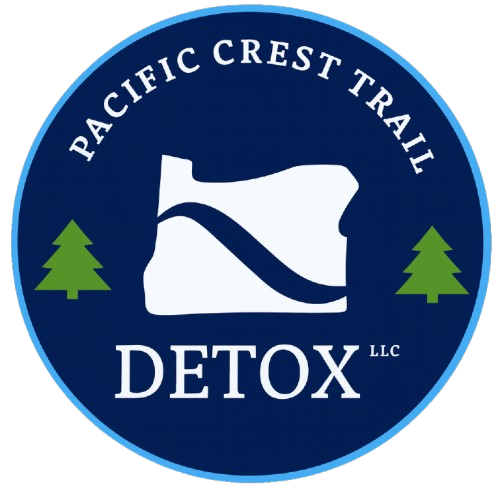As misuse continues, the consequences extend beyond physical health, impacting:
Beyond medical care, we foster an environment of understanding and encouragement. We know what it takes to recover—many of us have walked this same path ourselves. This helps clients build resilience and move forward with renewed hope and the skills needed for lasting sobriety.
These medications, derived from the opium poppy plant, include well-known prescription opioids such as:
When taken as directed, oxycodone alters pain perception by binding to opioid receptors in the brain. However, misuse often involves taking this medication beyond the prescribed time or taking more than the prescribed dose.
Hydrocodone is another widely prescribed opioid commonly found in medications like Vicodin and Norco.
The drug affects the central nervous system by blocking pain signals and producing sedation. However, when taken in excessive amounts, hydrocodone can trigger compulsive use.
This creates a powerful sense of euphoria, which the brain begins to crave. Over time, the natural production of dopamine decreases, and the brain becomes reliant on the drug to feel pleasure.
Additionally, social factors such as peer pressure or easy access to opioids can contribute to misuse and eventual addiction.
Withdrawal is the body’s natural response to the absence of a substance it has become dependent on. When painkillers, particularly opioids, are used over an extended period, the brain and body adapt to their presence. Abruptly stopping or significantly reducing the dose disrupts this balance.
In the initial hours after the last dose, individuals may experience flu-like symptoms.
The body, no longer numbed by the opioid, begins to react to its absence. Gastrointestinal distress, such as nausea, vomiting, and diarrhea, is also common. These symptoms can be particularly uncomfortable, often leading individuals to seek relief by resuming the drug.
As withdrawal progresses, typically within 24 to 72 hours, symptoms intensify. Abdominal cramping, dilated pupils, and tremors may occur. As the central nervous system becomes hyperactive, heart rate and blood pressure may also increase.
One of the most challenging aspects of this phase is the overwhelming fatigue coupled with an inability to sleep. These symptoms can make daily functioning nearly impossible without professional support.
After the peak phase, physical symptoms gradually subside, but some may persist for days or even weeks. Lingering issues such as chills, goosebumps (often referred to as “cold turkey”), and general weakness are common.
While these symptoms are less severe, they can still be debilitating, particularly for those attempting to resume normal activities.
Along with physical discomfort, painkiller withdrawal often brings intense emotional and psychological challenges.
Here are some of the most common mental health symptoms linked to withdrawal:
Anxiety is a common psychological symptom of withdrawal, as the brain struggles to regulate mood without opioids.
Physical discomfort can intensify these feelings, creating a distressing cycle that makes withdrawal even more challenging.
As the brain struggles to restore dopamine balance, depression is another common withdrawal symptom.
These emotional challenges can make the recovery process feel even more overwhelming.
Cognitive functions such as memory, concentration, and decision-making may be impaired, making it difficult to focus or perform tasks. This cognitive fog can persist even after the acute withdrawal phase has passed.
A supportive and medically supervised detox for painkiller addiction is essential for managing withdrawal symptoms effectively and laying the foundation for sustainable healing.
Below is how PCTD provides a safe and comfortable environment for recovery:
At PCTD, effective detox for painkiller addiction begins with individualized care.
This customized approach ensures that each person gets the targeted care they need for a smoother recovery journey.
Detox for painkiller addiction requires continuous monitoring to ensure safety and effectiveness.
At PCTD, healing begins in an environment that feels like home.
Our facility is intentionally designed to prioritize:
Cozy two-person bedrooms provide a tranquil space for rest and reflection while inviting communal areas encourage connection and support. This helps us create a nurturing atmosphere where individuals feel safe and valued on their journey to healing.
We focus on proper nutrition and hydration during detox for painkiller addiction. Three daily home-cooked meals help restore energy, while steady hydration ensures stability and comfort throughout withdrawal.
One to two group sessions per day provide structured opportunities for our clients to:
These sessions are facilitated by licensed therapists who create a safe environment for open dialogue. Group therapy helps individuals realize they are not alone in their struggles, reducing feelings of isolation and building a sense of community.
At PCTD, we integrate evidence-based medications into our programs when needed to alleviate symptoms, stabilize the body, and promote a safer recovery process.
Below are some of the most common medications we may recommend during detox for painkiller addiction:
Methadone is a full opioid agonist that is helpful in managing opioid withdrawal.
Stopping opioid use abruptly can lead to severe discomfort and health risks.
To ensure safety and effectiveness, we implement a gradual tapering protocol, adjusting medication doses based on:
This structured process helps ease withdrawal symptoms while keeping long-term recovery in focus.
We may utilize a range of supportive medications to manage challenging symptoms during detox for painkiller addiction, these usually include:
Clonidine helps manage withdrawal symptoms related to the overactivity of the central nervous system. It works by stimulating alpha-2 adrenergic receptors in the brain, which reduces the release of norepinephrine, a neurotransmitter associated with the body’s “fight or flight” response.
Therefore, clonidine’s ability to modulate the nervous system provides a valuable tool in mitigating the acute discomfort of withdrawal, facilitating a smoother transition towards recovery.
Detox for painkiller addiction focuses on stabilizing the body and managing withdrawal symptoms, but it does not address the psychological, emotional, and behavioral aspects of addiction.
Long-term recovery requires a comprehensive approach that includes:
Without continued treatment, individuals are at a higher risk of relapse, as the triggers and challenges of daily life can easily undermine progress made during detox.
At PCTD, we offer a range of aftercare services following detox for painkiller addiction, such as:
By fostering relationships with others in recovery, alumni can:
Regular check-ins, peer support groups, and community events help individuals maintain motivation and resilience. Through these resources, alumni gain the strength and confidence needed to navigate life beyond treatment.
Recovery doesn’t end after detox—and neither does our support. We offer:
PHP focuses on addressing the psychological and emotional aspects of addiction, providing tools for managing cravings, triggers, and co-occurring health conditions.
Individuals in IOP attend therapy sessions multiple times a week, ensuring they receive consistent support while maintaining their daily routine. This structured approach allows them to focus on recovery without stepping away from work, school, or family obligations.
Therapy sessions in IOP emphasize:
This program is ideal for those who have completed PHP or require a step-down level of care.
Outpatient care is tailored to the individual’s needs, with sessions scheduled as needed.
Breaking free from painkiller addiction isn’t just about quitting; it’s about reclaiming life, health, and a sense of purpose.
At PCTD, we provide a clinically supervised detox for painkiller addiction that minimizes discomfort while preparing individuals for long-term recovery. With evidence-based treatment and skilled professionals by your side, this first step can be one of strength and renewal.






